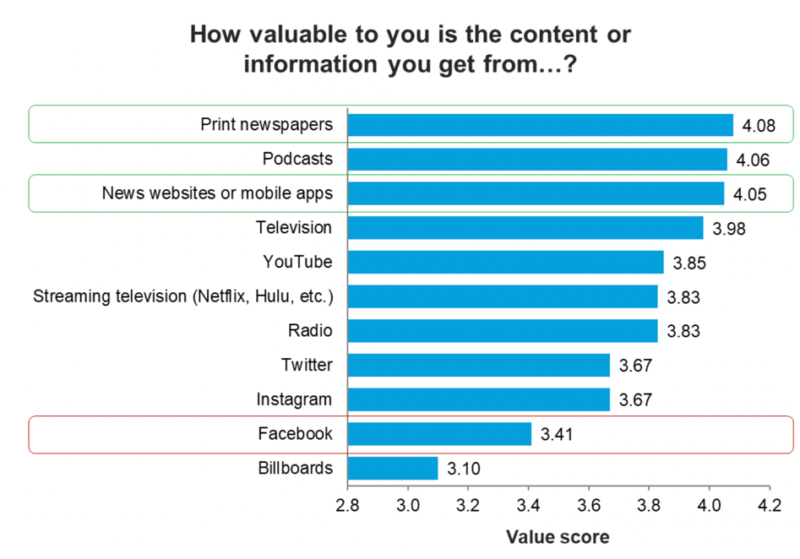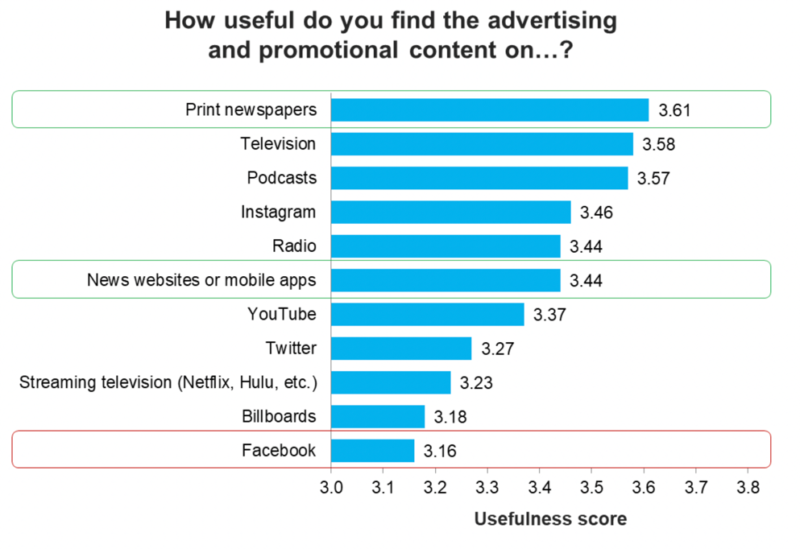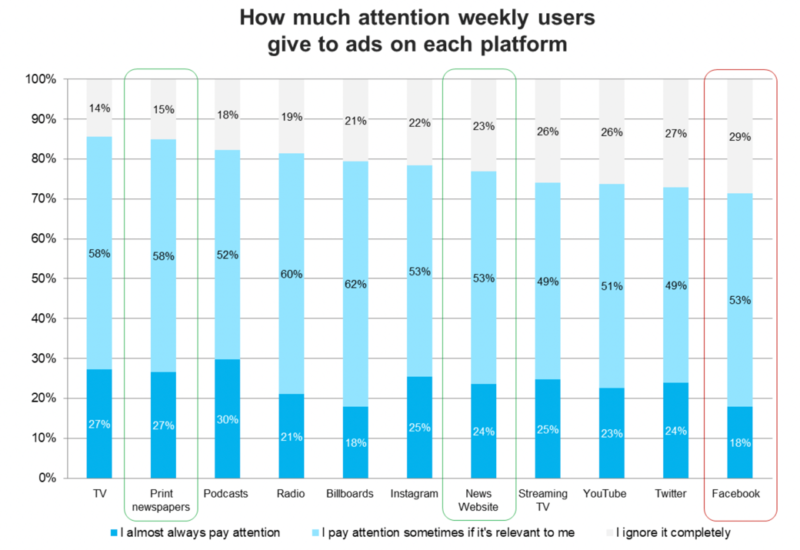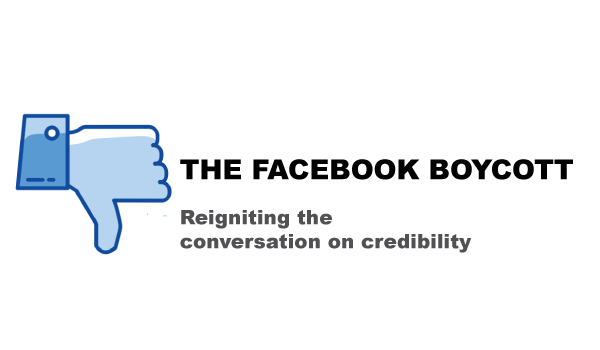The current environment demands that brand and businesses re-evaluate environments their messages call home
In today’s economic and political environment, consumers are watching the actions of brands—and their response to current events—more closely than ever. One group, the Stop Hate for Profit campaign, is encouraging brands to boycott their advertising spend on Facebook, citing that the company does not do enough to remove hateful and racist content from their platform. So far, large brands have agreed to short-term pauses on their Facebook campaigns—brands including Ford, Adidas, HP, Coca-Cola, Unilever and Starbucks, among others.
Although the long-term impacts on both Facebook as a company and social ad spend is yet to be seen, the boycott does bring up important conversations around the effectiveness of different advertising platforms, particularly concerning the importance of “brand safe” and reputable environments for messaging. As a part of this conversation, the unique importance and credibility of news and publishing websites should be considered.
Consumers trust and pay attention to ad messages on news websites
Last Spring (April/May 2019), we surveyed 2,031 consumers on their media habits and preferences across both digital and physical formats. The results reveal that, although usage of multiple formats continues to be at an all-time high, trust and attention to those media platforms varies widely. Particularly comparing print and digital news publishers to Facebook, the study revealed wide differences in perceived value and usefulness of ad messages in those mediums.
Consumers value content in print and online via news sources—more than any other medium
- Consumers say they value print newspaper content more so than any other media platform, including TV, Facebook and Netflix.
- Print newspapers received the highest overall value score (4.08), with news websites and apps not far behind (4.05).
- News websites and apps averaged a content value score approximately 19% higher than content on Facebook.

Consumers find an equal amount of value and usefulness in ad messages in newspapers and news websites–significantly more than Facebook
- Consumers say they find the advertising and promotional information they come across in newspapers more useful than the advertising content they come across on any other platform.
- Among our surveyed mediums, ads on Facebook scored the lowest overall for usefulness among consumers.

Advertisements in print and digital news environments are also more likely to capture the overall attention of consumers
- Consumers are more likely to pay attention (and less likely to ignore) ads in print newspapers and news websites—27% of consumers almost always pay attention to ads in newspapers (and 24% almost always pay attention to ads on news websites and apps).
- Once again, Facebook had the lowest performance of measured mediums for attentiveness, with only 18% of consumers saying the almost always pay attention to ads on Facebook.

Placing your message on news and publishing sites increases overall effectiveness and return on investment
comScore, an industry-leading digital analytics and reporting organization, conducts research to examine the branding effectiveness of digital display ads appearing on Digital Content Next (DCN) member sites compared to non-member sites. DCN is a consortium of digital publishers whose brands have a direct relationship with the consumer and therefore are more likely to be household names—generally considered to be “premium publishers”. When compared to other display options, as well as social media outlets, placement on premium publisher websites can have positive effects on brand lift, consideration, and visibility.
Premium Publisher Difference #1: Higher Brand Lift
In comScore’s analysis, display ads on premium publisher sites had an average of 67% higher brand lift than non-premium publishers, confirming that premium websites deliver premium performance. Brand lift is an increase in interaction with a brand as a result of an advertising campaign and is primarily used to identify a positive shift in customer awareness and perception. Exposure adjacent to news content can keep your message top of mind with consumers as they look to make purchase decisions.
Premium Publisher Difference #2: Higher Consideration
Premium publishers are more than 3x more effective in driving mid-funnel brand lift metrics, such as favorability, consideration and intent to recommend. Mid-level marketing focuses more on influencing how consumers feel about a brand so that they are more likely to purchase that brand when they are in the market to do so.
Premium Publisher Difference #3: Higher Visibility
Premium publisher effectiveness is driven in part by higher viewability rates which includes lower levels of invalid traffic. This is important when considering a display alternative to your social media messages and evaluating the value of direct-site versus programmatic purchasing decisions. Since ads that aren’t viewable by definition have no impact on their audience, sites with lower viewability rates dilute the overall effectiveness of impressions running on their site.
Uniquely positioned as a leading collection of publishing websites
Tribune Publishing’s network of websites, apps, and publications connects with consumers in some of the largest markets in the country, with reach rivaling nationally focused news brands.
REACH: We are the digital news destination for reaching Chicagoans—their trusted source. Our audience is adapting, and so are we—building platforms across devices. Our brand websites connected with more than 90M users in May 2020.
AUDIENCE: Our scale offers the ability to target audiences you desire most. Building platforms for our eNewspaper and creating registered user databases allows us to maintain our core audience and grow into new audience segments. Our network of eNewspapers delivered more than 192M page views in May 2020, and we collectively send more than 1.4M newsletters each week to opt-in recipients across our brands.
CONTENT: Beyond just breaking news, we’ve become a destination for various content. Our local audiences rival many standalone sites in terms of reach, with an ongoing strategic focus on engaging, innovative sports and dining content. Our coronavirus-related content surpassed 64M page views in May 2020.
RESULTS: The combination of the above factors contributes to what your business cares about most—results equating to action and sales. Our ad placements consistently outperform the competition and network buys.
Sources: Tribune Publishing Online Media Engagement Study, April – May 2019, n = 2,031; comScore, Digital Content Next (DCN) Measurement and Analysis; Google Analytics (site traffic); Internal Reporting (newsletters).

